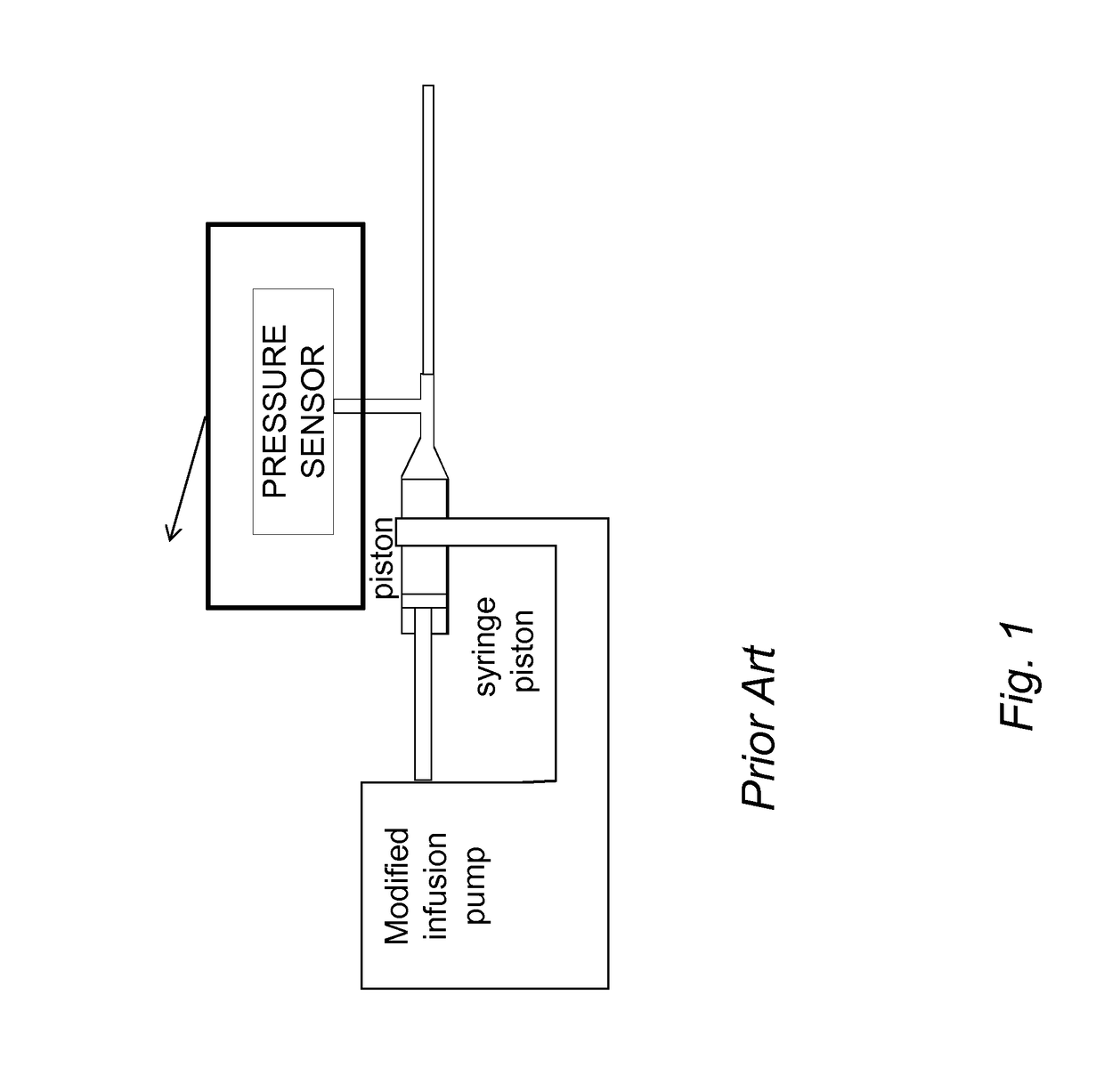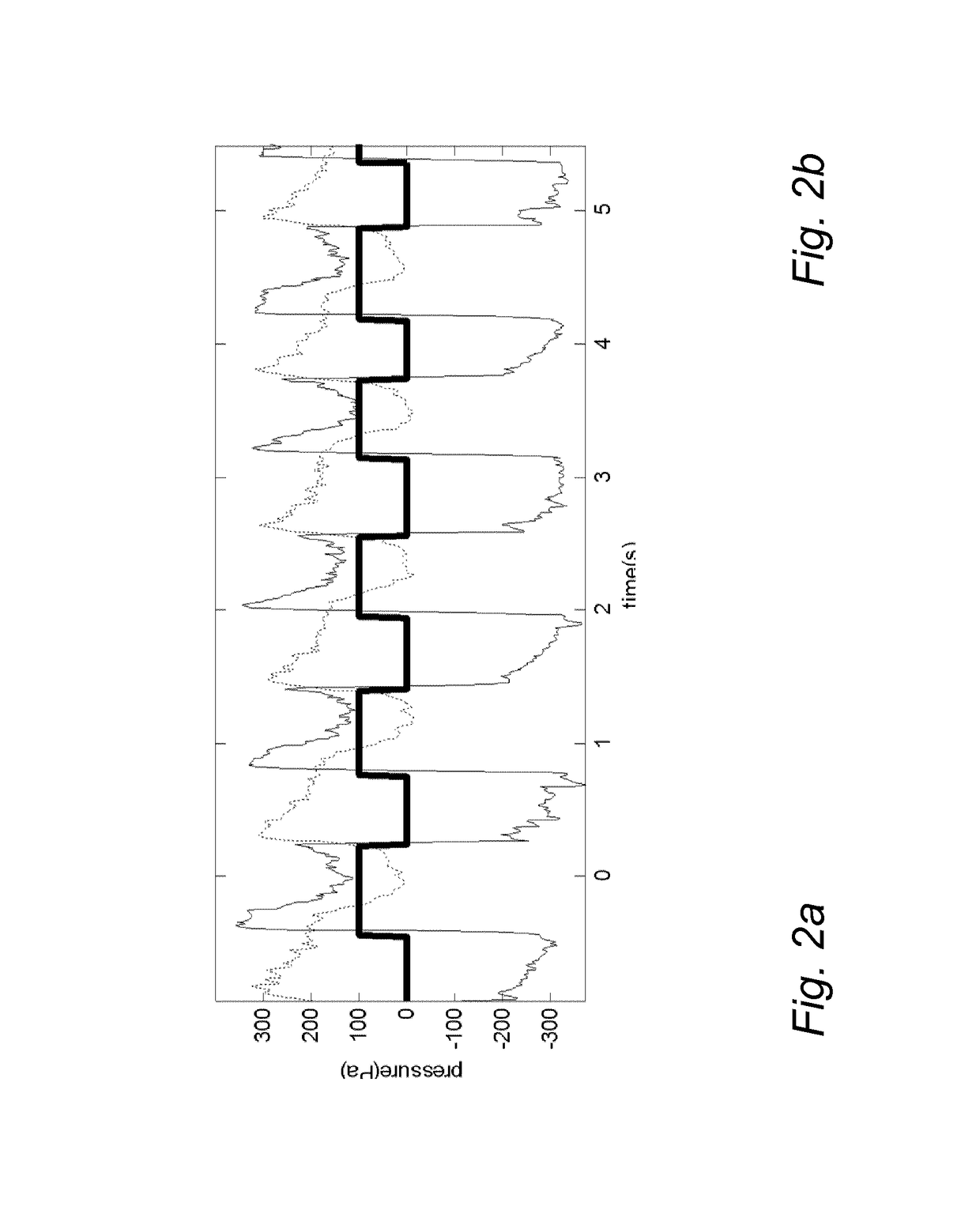Method and system for effective breath-synchronized delivery of medicament to the lungs
a retropharyngeal instillation and medicament technology, applied in the field of retropharyngeal instillation of medicaments, can solve the problems of complex and invasive procedures, inability to directly address surfactant deficiency, and inability to intubate, and achieve the effect of low cost and efficient delivery
- Summary
- Abstract
- Description
- Claims
- Application Information
AI Technical Summary
Benefits of technology
Problems solved by technology
Method used
Image
Examples
embodiment 3
on of the Whole Breathing Signal
[0168]Embodiment 3 provides a solution to the problem of delivery the medicament in phase with the breathing pattern of the patient by means of a pump means which can generate a flow of medicament towards the lung of the patient in a prompt way thanks to the approach described in previous Embodiment. Embodiment 3 differs from Embodiment 2 because it provides a way to fully reconstruct the breathing activity of the patient.
[0169]This aim can be obtained at least by means of two approached as detailed below.
embodiment 3 — approach 1
Embodiment 3—Approach 1
[0170]The complete working scheme of Embodiment 3—APPROACH 1 is reported in FIG. 16, where the differences compared to Embodiment 2 are enclosed within a dashed line.
[0171]The controller action is acting to make the response of the system as similar as possible to the reference pressure, Preference, that is a step-like signal equals to the flow times the hydraulic resistance of the catheter.
[0172]Since the measured pressure, Pmeasured, contains also the contribution of the breathing activity, the controller action tries to compensate even for that signal, thus the controller output will contain informative content about Ppharynx′. If the infusion pump and atomizing catheter block and the estimated plant block are fed with the same signal, i.e. the output of the controller, the estimated P infusion Pump and Pmeasured will be different. This is because the output of the estimated system doesn't include the breathing activity but just the response of a first orde...
embodiment 2
Simulation and Test for Embodiment 2
[0173]Simulations were run to test this embodiment. The following assumptions were considered:
[0174]1) the simulation requires to describe both the actual delivery system made of “infusion pump and the atomizing catheter”, as reported in FIG. 16, and the system that is estimated from the recorded pressure and flow, “estimated plant” as reported in FIG. 16, whose parameters are identified on line continuously. As found in vitro testing of embodiment 2, the identification process introduce an average error on the estimation of the parameters that is around 5%, therefore an error of 5% was added to the parameters of the “estimate plant”, respect to the parameter of. the actual “infusion pump and the atomizing catheter”.
[0175]2) “Controller”, as reported in FIG. 16, has been chosen from PID family and it has been design on order to reach a rising and falling time of 50 ms as obtained in the in vitro testing of embodiment 2.[0176]3) Preferably, FIG. 16...
PUM
 Login to View More
Login to View More Abstract
Description
Claims
Application Information
 Login to View More
Login to View More - R&D
- Intellectual Property
- Life Sciences
- Materials
- Tech Scout
- Unparalleled Data Quality
- Higher Quality Content
- 60% Fewer Hallucinations
Browse by: Latest US Patents, China's latest patents, Technical Efficacy Thesaurus, Application Domain, Technology Topic, Popular Technical Reports.
© 2025 PatSnap. All rights reserved.Legal|Privacy policy|Modern Slavery Act Transparency Statement|Sitemap|About US| Contact US: help@patsnap.com



